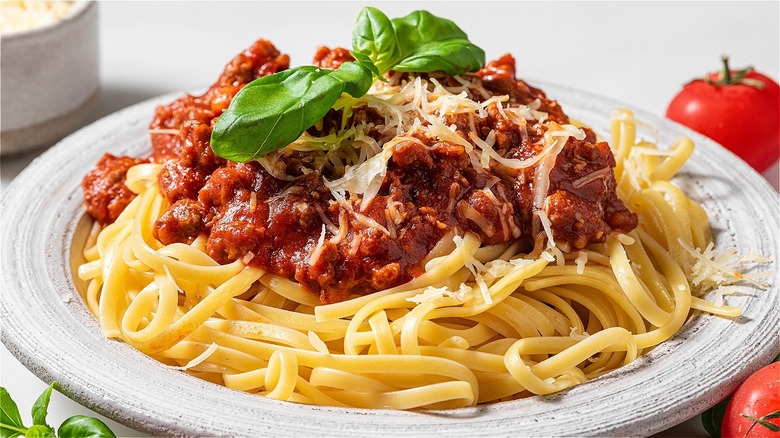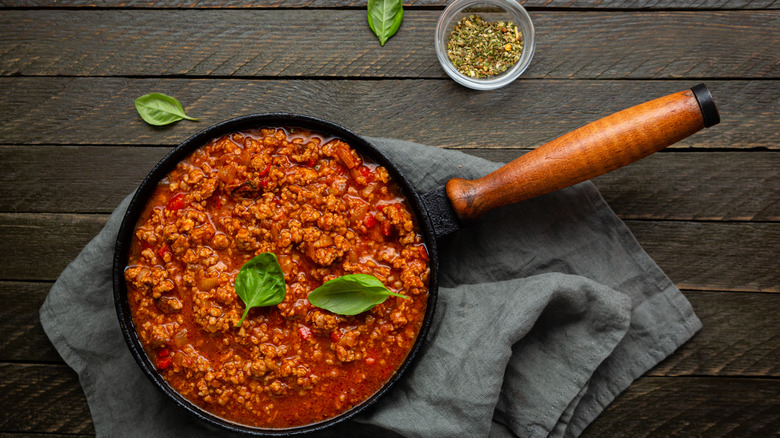Why Traditional Italian Bolognese Has No Tomato Sauce At All
You can't always avoid carbs, especially if you happened to be in Italy like our friend Stanley Tucci for his CNN travel show, "Searching for Italy," but you can choose carb dishes that are meat-based to make sure you're also getting some protein. Enter bolognese. It's actually a ragù, traditionally referred to in Italian as ragù alla bolognese. Bolognese was originally thought up in Bologna, where they hand-chopped pieces of beef or veal. When pairing it with pasta, the point is always to find that copacetic, harmonious balance of noodles and sauce, which is why bolognese was historically served with long pasta shapes that are broader than spaghetti, like lasagna, tagliatelle, and pappardelle.
People residing in the US may be used to a version of spaghetti bolognese featuring bright red tomato-centric sauce and long, stringy pasta. Other variations have popped up to stretch spaghetti bolognese with what's readily available in your pantry, adding mushrooms and lentils for extra health and bulk. Although, when it comes to traditional Italian bolognese, there aren't any of these twists — and there's actually no tomato sauce in it at all.
According to Chewing The Fat, the traditional collection of bolognese ingredients is most aligned with one of the earliest recorded recipes, penned by Pellegrino Artusi. In fact, he was the first to unify all of Italy's various recipes in one cookbook, "The Science of Cooking and the Art of Eating Well," published in 1891.
Authentic, essential bolognese ingredients
Bolognese is traditionally a ragù, or meat-centric sauce. There's the soffrito, a medley of aromatic vegetables including onion, celery, and carrot, which provides a foundational base upon which to build flavor. Then comes the meat, which is typically ground or diced beef or veal. A fatty pork like pancetta adds a bit of salt, while simple herbs and spices like salt, black pepper, and a bit of nutmeg sweat out even more flavor while the meat sautés and braises. And finally, white wine and milk or heavy cream deglazes and adds depth and creaminess to the dish.
If you really want to go traditional, skip the oil, too, and just use butter — as one nonna explains to Stanley Tucci in "Searching for Italy," oil was just too historically expensive.
Bolognese is one of those dishes that people keep coming back to over and over again for comfort and nostalgia. For many, it's steeped in cultural roots and memories from childhood, holding a special place in their hearts. Even celebrities like Lady Gaga have found they are attached to the dish. And while she uses rosé instead of white wine to impart a layer of complexity, Gaga still ditches the tomatoes, nodding to the white bolognese tradition.

